European Alliances
Main Players in the Early Years
Chapter 2 : The Royal Pack of Cards...
The trend towards centralisation began in France, after the Hundred Years War. The almost total ruin of the country meant that when King Charles VII finally emerged as the victor he was determined to build a wealthy, powerful monarchy that could mobilise the whole country against an invader and repress over-mighty barons. Charles VII's successors continued his policies.
With the emergence of a strong central government, kings, still believing that their subjects were divinely appointed to help them gain more territory, wealth and power, began to look for conquests. But even the mightiest kings need allies and so began a series of alliances that would shape the following century. The alliances were made, broken, remade, and broken again by a group of major players on the European stage.
Spain
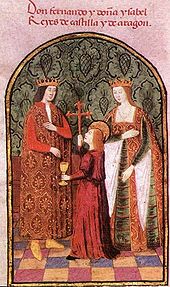
Mediaeval Spain had been divided into several kingdoms that were gradually brought together by marriage. In 1469 the final piece of the puzzle fell into place with the marriage on 19 th October 1469 of Ferdinand of Aragon (1452 – 1516) and Isabella of Castile (1451 – 1504). Their wealth and power were greatly enhanced by the completion of the Reconquista with the fall of Granada in 1492, which for the first time since the Roman Empire created a unified country of Spain.
Later, the wealth produced by territories in the New World began to flood into Spain, making it a contender for the West's first Superpower. They were known as the "Catholic Kings", although Isabella was distinctly more religious than her husband, who could never be considered a man of his word.
Burgundy and the Empire
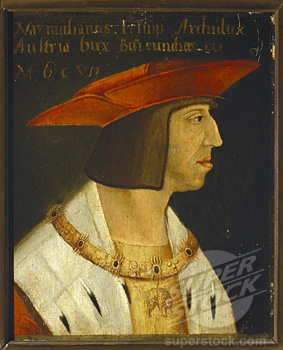
Successive members of the Hapsburg family of Austria had been elected as Holy Roman Emperor, and by the 1470s they were led by the Holy Roman Emperor, Maximilian (1459 – 1519). Before being elected Emperor, whilst merely an Archduke, Maximilian had managed to snag Mary of Burgundy (1457 – 1492), the foremost heiress in Europe, as his wife.
Mary had inherited the Duchy & County of Burgundy, nominally a vassal state of France, but in reality a separate, and extremely wealthy, country. Part of Mary's territory of Burgundy was the area now largely encompassed in the modern Netherlands, and part was in the modern Franco-Swiss border area, south of Lorraine. The French King had been desperate to get his hands on Mary and her vast lands for his son, later Charles VIII. George, Duke of Clarence, younger brother of Edward IV of England had also made a play for her, but, in the end, not trusting the French and believing them ambitious to re-absorb the Duchy, she selected the Archduke.
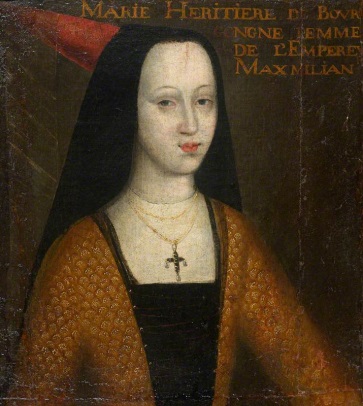
Sadly, Mary did not live long enough to enjoy the imperial crown, dying from a fall from her horse, aged just twenty-five.She and Maximilian had two children.Philip, known as "the Fair" (1478 – 1506), who inherited his mother's lands at the age of five, his father acting as regent, and Marguerite of Austria (1480 – 1530).
Maximilian and Ferdinand were united in a desire to encircle and contain France, although both gained reputations for being slippery and inclined to double cross their allies. To this end, they negotiated a double marriage: Philip the Fair to the Catholic Kings' second daughter, Juana, and the young couple's respective siblings, Marguerite of Austria and Juan, Prince of the Asturias to each other.
The descendants of Philip and Juana went on to rule Spain, Burgundy and the Empire, whilst the daughters were married into every royal house in Europe (except England and Scotland). This descent from the original duchy in Austria is the reason why all members of the family, even those born in Spain or Burgundy are referred to as "N or M of Austria".
The enmity towards France was based on fear of it as the largest, most centralised, and richest state in Europe. French kings were keen to expand their territories both close to home, and across the Alps in Italy.
France
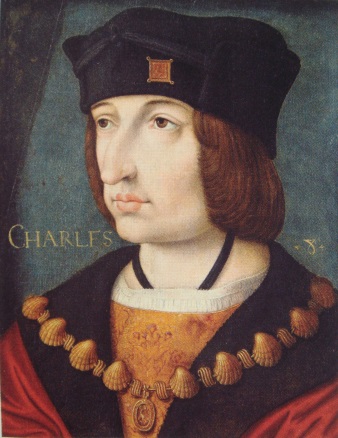
Charles VIII of France (1470 – 1498) was offended by the existence of the independent Duchy of Brittany, in the peninsula to the north-west of France, and was determined to bring it within his borders. His chance came when Duke Francis II (1433 – 1488) died, leaving a fifteen year old daughter, Anne, as his heir.
Anne, even more sought after than Mary of Burgundy, and just as suspicious of French motives, tried her hardest to escape French control, again through marriage to the now widowed Maximilian.
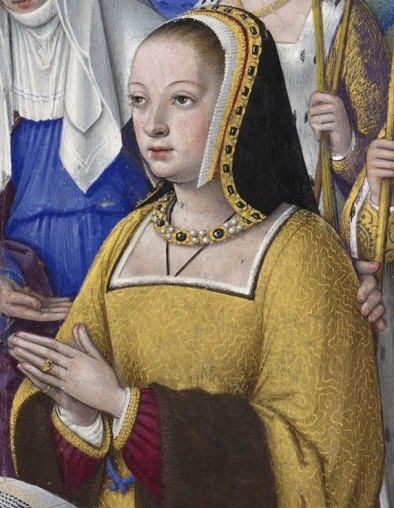
Despite her best efforts her lands were invaded by France and Maximilian failed to rescue her before she was obliged to marry Charles VIII, and later, Charles having died childless, his heir, Louis XII (1462 – 1515).
Charles had thrown over Maximilian's daughter, Marguerite of Austria to make this more advantageous match. Marguerite resented this, despite her subsequent marriage to Juan, and took the opportunity for revenge when she had it, later in life.
Having gobbled up Brittany, France was on the lookout for more land and Charles VIII showed his might by invading Italy in 1494, following an invitation from the Pope to make good the king's weak claim to the kingdom of Naples.
Italy at the time was broken down into the northern city-states, such as Milan, Florence and Venice, the middle belt of the Papal States, and the southern Kingdom of Naples and Sicily, to which both Aragon and France had a claim. Understanding the struggle for control of Italy between France, Spain, the Empire and the Papacy in the fifteenth and sixteenth centuries can be likened to understanding the Schleswig-Holstein conflict in the nineteenth
Only three men ever understood it – the first is dead, the second has gone mad, and the third has forgotten.
The Italian States were variously duchies or republics, and sometimes a curious hybrid of the two, as in the case of Florence, nominally a republic but dominated by the de Medici family.
The Scramble for Italy
Also busy in Italy, were the Popes. Obviously, they did not have dynastic claims in quite the way kings had, but they did have a remarkable number of "nephews" for whom they were keen to carve out patrimonies. In addition, the Popes wished to preserve the pre-eminence of the Holy See over temporal rulers, particularly the Emperors who claimed to be the leaders of Europe. The Papal States were the lands across the middle of Italy which were ruled directly by the Vatican – Naples to the south, and the City-States to the north, were always keen to encroach.
Innocent VIII, who had made the invitation to Charles VIII to annex Naples, repented of his idea and revoked the offer before he died but it was too late.Charles raised a massive army which cut a swathe through Italy. Horrified at what had been unleashed, the next Pope (the notorious Borgia, Alexander VI) quickly formed the League of Venice to expel Charles.The League was joined by Maximilian, Ferdinand of Aragon, the Duke of Milan, Venice and England.
Not to be outdone by his northern neighbours, whilst his wife Isabel of Castile was concentrating on enlarging Castile through the Reconquista in the south of the Iberian Peninsula, Ferdinand of Aragon was keen to grab back the Kingdom of Navarre, and the provinces of Roussillon and Cerdagne. These lands straddled the Pyrenees and had previously been ruled by his ancestors, the Counts of Barcelona and Kings of Aragon.
Ferdinand also had an interest in Italy. His cousins, Alfonso II (1448 – 1495), followed by Ferrante II (1469 - 1496), and Frederick IV (1452 – 1504) were Kings of Naples, and his allies, until 1500. Thus desire for dominion of the land mass of modern Italy became the fundamental casus belli for the whole period from 1494, when Charles VIII invaded it, until a final settlement was made in 1559.
